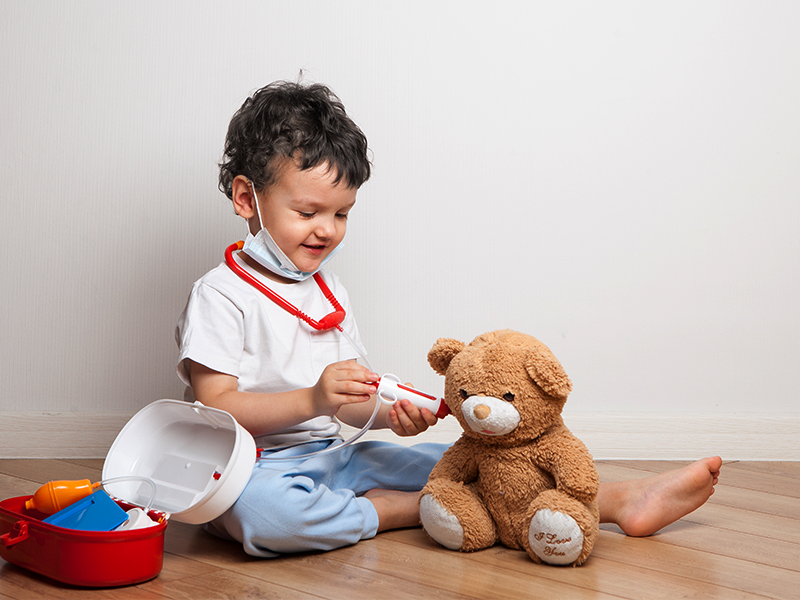First aid is important for a number of situations that don’t require a trip to the hospital. From a minor ailment to a more serious injury, a first aid kit is a must in every home. Taking place on the second Saturday in September every year, World First Aid Day will be celebrated on September 11 2021. It was first established in 2000 by the International Federation of Red Cross and Red Crescent Societies (IFRC) in order to increase awareness and accessibility to first aid. A timely provided first aid can be the difference between life and death. So, learn how to create a first aid box with the help of an expert.
TC46 connected with Director of Emergency Medicine Dr Sandeep B Gore of Fortis Hospital, Mumbai to explain kid-friendly first aid essentials you need to have at your home and how to use them in the time of need.
First Aid Kit: A Bag With Emergency Medical Supplies
A first aid kit is nothing but a bag or box with emergency medical supplies to treat a sudden cut, bruise, burn, sprain and more. We are not aware of when and how one can get injured or fall ill; having a first aid kit at home is the first step of treatment to help the injured person before they’re taken to a hospital or nearby doctor. Thus, first aid serves essential in aiding and preventing severe injury or infection from getting worse, even death at times.
15 Most Essential Items To Be Included In A First Aid Kit
The 15 essentials are:
- Antiseptic solution, alcohol swabs: This is used to disinfect a wound. Nowadays, a sanitiser can serve the same purpose.
- Adhesive bandages: To cover the wound and prevent it from getting further infected with germs. There are different sizes for multiple purposes, so keep a good stock of them all.
- Antibiotics: Medication to further stop an infection.
- Gauze pads or rolls: In cases of significant trauma injuries, gauze rolls are required to stop the bleeding momentarily before reaching the hospital.
- Small band-aids: For minor cuts such as paper cuts or one from a knife while chopping vegetables.
- Various instruments: Such as sterilised scissors, tweezers to cut the gauze or crepe bandage.
- Cold Packs: For muscle or ligament strain, bruises and more.
- Other medications: Pain meds, paracetamols, medicine for vomiting, indigestion, acidity and more.
- Shock thermal blanket: A thermal shock blanket protects against shock, excessive cold or hot environments and external factors.
- Creams: Itching cream or lotion to apply on skin for allergies
- ORS sachets: Oral Rehydration solutions for dehydration
- Ointments: To prevent bacterial infections. Crepe bandages to wrap around the joint in cases of fracture.
- CPR barrier device or mask; gloves, masks and PPE.
- Dressing pads: For injuries and wounds.
- Asthma inhaler pumps: If you or someone in your family is suffering from asthma.
5 Tips To Ensure A Perfect First Aid Kit
1. Keep checking & updating the contents of a first aid box
It is vital that we keep checking the contents of a first aid box, whether they’re in good shape and have not expired or deteriorated. Make sure that every product is sterilised and replaced after use. Keep your first aid box in a dry, clean and accessible place for emergency use.
2. Preserve life, Prevent deterioration, Promote recovery
The three Ps of first aid are, Preserve life, Prevent deterioration, Promote recovery. The first and foremost priority in any situation must be to save the person and keep them alive. In any case, it is essential to stabilise the patient before handing them over to proper medical help and practitioners. Thus, one may be required to perform CPR (CardioPulmonary Resuscitation) on the patient. In such instances, begin with C-A-B (Circulation, airway, breathing). In cases of mild injuries, treat the wound with an antiseptic solution first.
3. Teach a child about first aid from a relatively young age
The best way to teach a child about first aid is to sensitise them from a relatively young age. Teach them when to speak out in cases of danger. Train them to call for help when a person collapses or gets injured in front of them. Play games and make them act as doctors. Enact situations to make them practice CPR or the first proactive steps to take in case of injuries.
4. Keep an inhaler, adrenaline pills for asthma patients
If a person has an asthma attack, make the person sit upright as the first step. Give them four puffs from the inhaler. Thus, keep an inhaler, adrenaline pills, a bottle of liquid Benadryl, antihistamine pills and sanitiser wipes ready.
5. A kid-friendly first aid kit must have a manual
A kid-friendly first aid kit must have a manual with easy-to-understand instructions and graphics describing the plan of action in various situations. List of emergency phone numbers and gauze, adhesive tapes, elastic bands, ointments, antiseptic wipes and more.
Travel-Friendly First Aid Items
The essentials to carry while travelling includes:
- Doctor’s prescriptions
- Allergy medications
- Adhesive bandages
- Sanitiser
- Disinfectant wipes
- Diapers
- Ibuprofen
- Paracetamols
- Antibiotics
- Cotton pads
- Mosquito repellents
- Cold packs
- Dressing pads
- Sunscreen
- Ointments









